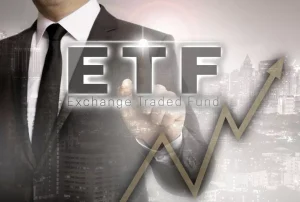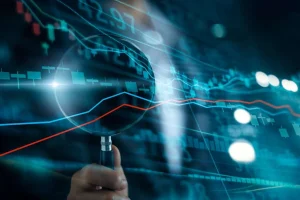Decentralized finance (DeFi) has changed the financial system by allowing peer-to-peer transactions without the involvement of a third party. With the boom of artificial intelligence (AI), another concept has emerged called DeFAI, which combines DeFi standards and AI-driven solutions to form an efficient and intelligent financial system. Below, we will talk about the strengths and weaknesses of DeFAI.
Understanding DeFAI
Essentially, DeFAI is an AI-backed DeFi solution in which most or almost all actions are performed with AI. It is software that can verify information, initiate staking, or make decisions without human intervention. It may also perform routine procedures on your behalf while you are busy with other things.
DeFAI is a relatively new concept but is already changing the digital assets and blockchain world. It is a general name for all AI-backed functions presented in the decentralized sector. Its mission is to automate online processes with the following tools:
- Autonomous trading agents. Autonomous bots may analyze datasets and adapt to market conjuncture, unlike standard trading assistants that adhere to pre-set conditions. They change their tactics based on new data. Such assistants can analyze significant datasets and forecast market movements for long/short positions.
- Abstraction layers. The primary feature of DeFAI is account abstraction, which improves the user experience by eliminating the need to handle gas commissions or several wallet connections. Market participants can launch DeFi operations with a single click without worrying about complicated backend procedures. It makes DeFi as accessible as possible to people with specialized knowledge of blockchain or cryptocurrency.
- Artificial intelligence powers decentralized applications (dApps). DeFi dApps offer a wide range of functionality, including lending, exchange, yield farming, and other capabilities. AI agents improve such services by improving liquidity provision and scanning tokens to define anomalies and suspicious activity.
The total value of the DeFAI sector is estimated to have exceeded $3 billion and will continue to grow.


Turnkey Brokerage Solution For Your Business
Get the most profitable fully licensed fx/crypto brokerage software or ready-to-operate business in 48 hours. Best-in-class web & mobile trading platforms, sales-driven CRM, full integration with MT4/5, and 150+ payment providers.
What Does DeFAI Do in Crypto?
This is exciting, but how is DeFAI changing the crypto sector? The answer is straightforward: these systems use AI-backed systems to improve standard DeFi activities in several ways.
- Automated trading tactics. Imagine a personal trading assistant that works 24/7. AI-backed bots study current market information, scan news, and process historical databases to make rational decisions. They increase profits and cut risks, so you don’t have to watch charts day and night.
- Improved yield tactic. Everyone wants to get passive income without studying where to invest, how to get the maximum profit, and when to transfer capital. AI-backed analytics provide yield farming, improve staking, and improve liquidity. This enables you to achieve maximum profit with minimal manual effort.
- Optimal market research. AI-ruled systems help identify market trends and provide sentiment analysis and token performance. Crypto industry participants can use this data to shape their investment tactics.
- Fraud prevention. DeFi is growing rapidly, and cybercriminals are one step ahead. This is where AI comes in. AI-backed systems monitor smart contracts and look for abnormal events before they become a full-scale threat. AI helps combat phishing, fraud, and other suspicious asset movements.
- AI-backed customer support. Decentralized finance AI can be complex, especially when we speak about new users trying to navigate portals, work with smart contracts, and keep track of market trends. AI improves the experience in several ways, from AI-ruled chatbots to smart dashboards that generate real-time analytics.
Since DeFAI is still in its infancy, its role in the crypto sector will increase.

Benefits of DeFAI
What could be better than implementing AI? The mix of AI and DeFi platform provides many benefits, including the following properties:
- Increased efficiency. Financial operations, including trading, improving yields, and managing risks, take milliseconds, allowing you to respond quickly to market fluctuations and earn potentially higher returns.
- Cost efficiency. DeFAI does not require third-party participation, reducing transaction and operational expenditures.
- Ultimate security. DeFi systems use AI-backed systems to detect fraudulent schemes and evaluate risks. This significantly reduces vulnerability and improves trust between market participants.
- Real-time data. AI-ruled systems provide real-time information and recommendations so traders can make decisions quickly. This increases liquidity in the DeFi environment, rewarding ordinary and institutional participants.
- More efficient decision-making. AI provides analytical information, helping traders to make rational financial decisions.
- Scalability and interoperability. DeFi AI solutions operate across several blockchain systems, increasing network liquidity and interoperability.
- Optimal risk assessment. AI-ruled agents work with massive databases to detect market risks and automatically change positions, which reduces the human factor and the likelihood of making decisions influenced by emotions.
AI-backed systems make the DeFI environment intuitive and user-friendly, attracting a wider audience.
Challenges of DeFAI
Despite the listed profits of DeFAI, we should not forget about some downsides of such a tool.
- Privacy of information. AI works with colossal datasets, and it is essential to protect user data when working with blockchain. Software developers must implement reliable algorithms, including zero-knowledge proofs, to protect the privacy of information.
- Technical troubles. The synchronization of AI and decentralized systems also creates computing power and scalability challenges. AI-backed solutions require significant computing power, which is difficult to achieve in decentralized and limited environments. Overcoming such difficulties requires advances in blockchain scalability and distributed computing.
- Ambiguous legislation. The combination of AI and DeFi creates regulatory constraints since current legislation cannot adequately assess the unique properties of such innovations. Regulatory institutions may require explanations on how smart systems make decisions, worrying about bias and accountability in the DeFAI system.
Stakeholders must work together to overcome these challenges.
The Future of Financial Automation
While the DeFAI concept faces some challenges today, its future looks promising. As blockchain tools improve, we expect to see even more seamless additions of AI functionality. For example, decentralized autonomous organizations (DAO) will soon be able to leverage the power of AI to control various activities, including savings distribution, voting, and dispute resolution. AI-backed oracles may further enhance the reliability and accuracy of on-chain datasets, enabling the selection of more accurate and proven DeFi protocols.
The transformation that DeFAI offers expands the boundaries of simple automation. Thus, the Real Asset Tokenization (RWA) framework of Singularity Finance confirms that DeFAI is capable of tokenizing AI’s computing potential and monetizing smart agents. Such an active development of DeFAI can lead to the emergence of non-standard financial products and services.
We will most likely be able to interact with AI-ruled decentralized insurance systems, dynamic solutions for improving profitability, and customized financial assistants operating within a blockchain environment. Such tools may alter how individuals and various institutions interact with capital, offering greater inclusiveness and adaptability to the needs of diverse industry participants.






